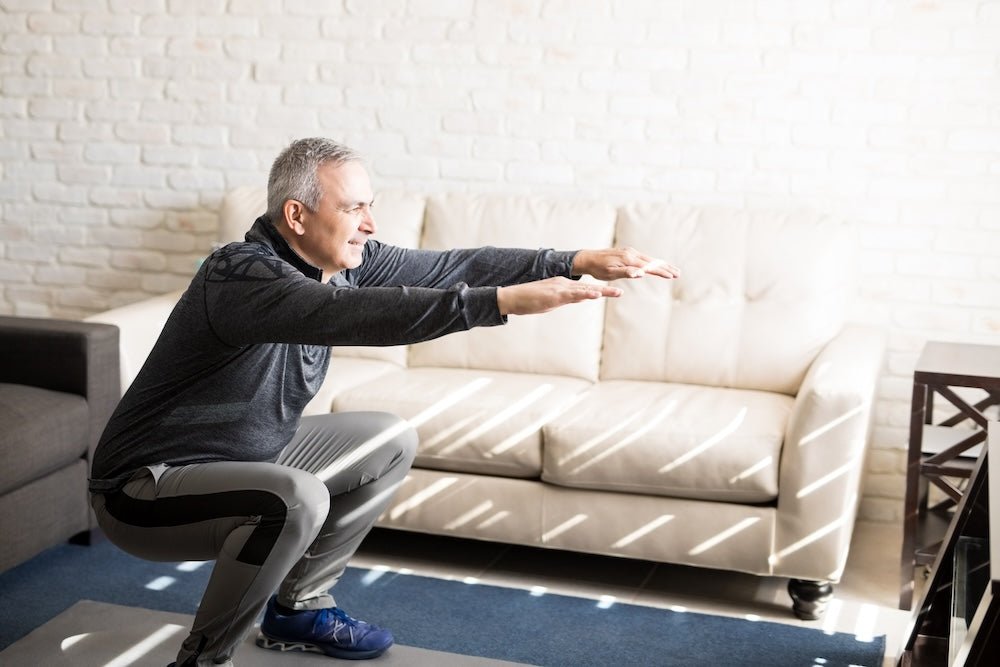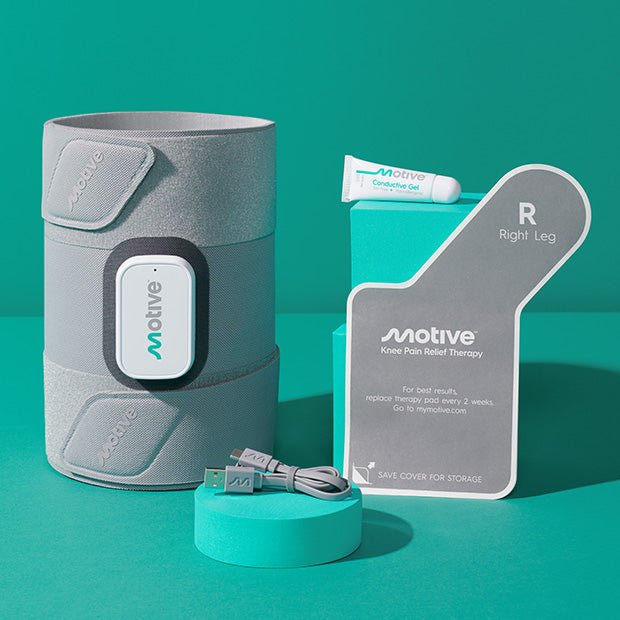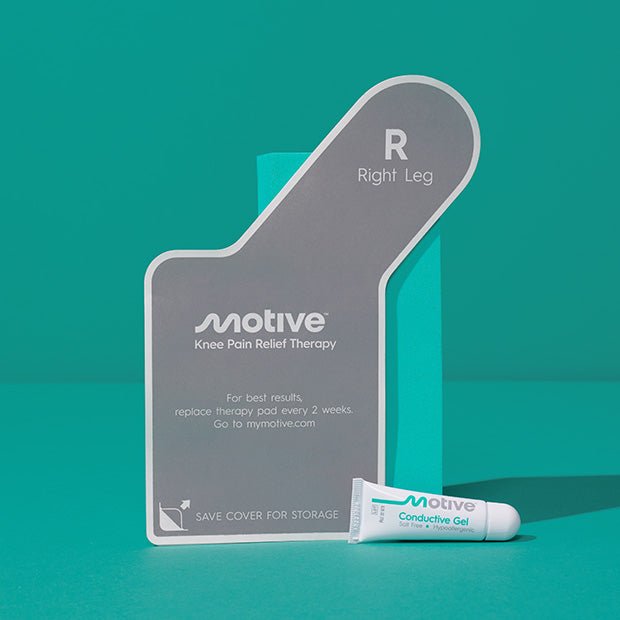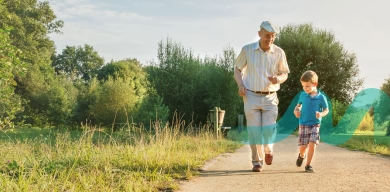
Hip and knee pain, impacting millions globally, often results from common conditions like osteoarthritis (affecting more than 30 million adults), bursitis, and sports injuries. These largest joints, pivotal for mobility, can experience discomfort from overuse, repetitive motions, or degenerative diseases.
Various factors contribute to this discomfort, ranging from degenerative diseases like osteoarthritis and rheumatoid arthritis to acute injuries such as sprains and meniscal tears. Additionally, lifestyle factors and overuse from activities or sports can exacerbate or trigger pain in these crucial joints.
This article aims to guide individuals experiencing such discomfort, offering strategies for relief and introducing Motive as a comprehensive solution.
The Anatomy of Hip and Knee Pain
The hip, a ball-and-socket joint, and the knee, one of the body's primary hinge joints, rely on cartilage, ligaments, and muscles (including the iliotibial band) for smooth operation. Conditions like hip osteoarthritis or bursitis in the knee can lead to joint pain, stiffness, and reduced range of motion. Common causes of pain include wear and tear of the femur's cartilage in the knee, inflammation of the bursa, or ligament strains.
Pain in these areas can arise from several common conditions, impacting their function and overall quality of life. Osteoarthritis, a degenerative joint disease, is the most frequent cause, characterized by the breakdown of cartilage that cushions the ends of bones where they meet to form a joint. Rheumatoid arthritis (RA) is an autoimmune condition that primarily affects the joints and can occur at any age. It occurs when the body's immune system mistakenly attacks the synovium, the lining of the membranes that surround the joints.
Bursitis involves the inflammation of the bursae, small, fluid-filled sacs that cushion the bones, tendons, and muscles near the joints. Bursitis can result from repetitive movements or pressures that irritate or overuse the bursae around the hip or knee.
The interconnectedness of the hip and knee joints means that dysfunction or pain in one can often lead to issues in the other. Given the complexity of these joints and the variety of conditions that can affect them, adopting a holistic approach to treatment and management is crucial.
Identifying Your Pain: Symptoms to Watch For
Identifying the specific symptoms of hip and knee issues is crucial in understanding the nature of your discomfort and determining the best course of action for relief. Beyond stiffness, swelling, and a decreased range of motion, individuals may experience a variety of signs indicating joint problems.
Symptoms signaling the need for medical advice include:
- Persistent joint pain
- Swelling
- Limited mobility
- Referred pain that progresses from the lower back to the hip or knee
If home remedies and over-the-counter medications (like ibuprofen, naproxen, and acetaminophen) do not alleviate the pain, or if the discomfort interferes with daily activities, it's time to consult a healthcare provider.
Simple Home Remedies for Immediate Relief
When faced with the discomfort of hip and knee pain, several simple home remedies can provide immediate and effective relief. The R.I.C.E. method stands out as a cornerstone for managing acute pain. This time-tested approach involves four key steps: Rest, Ice, Compression, and Elevation, each playing a crucial role in the healing process.
Equally important in the management of joint pain is:
- Maintaining a healthy body weight
- Integrating a balanced diet
- Incorporating regular, low-impact exercise
Anti-inflammatory drugs can reduce inflammation in the affected area, easing discomfort.
Exercises for Strengthening and Flexibility
Strengthening exercises targeting muscles around the hip and knee improve joint support. Flexibility routines focusing on the hip joint and knee can enhance the range of motion and alleviate stiffness. Regular physical activity is essential, but avoid exercises that exacerbate knee and hip pain.
For knee strength, one effective exercise is the straight-leg raise. Lying on your back with one leg bent and the other straight, slowly lift the straight leg to the height of the bent knee, then lower it back down. This exercise targets the quadriceps, the front thigh muscles that are vital for knee stability.
Another beneficial exercise is the seated leg press, which can be performed with or without resistance bands. It focuses on the extension and flexion of the knee to strengthen the muscles in the thigh and lower leg.
To enhance hip strength and mobility, bridges are an excellent option. Lying on your back with knees bent and feet flat on the ground, lift your hips towards the ceiling, squeezing the glutes at the top, then gently lower back down. This exercise not only strengthens the hip muscles but also engages the core and lower back, providing comprehensive support for the lower body.
Lifestyle Adjustments for Long-Term Management
To effectively manage hip and knee pain in the long term, incorporating lifestyle adjustments is key. These changes not only alleviate current discomfort but also contribute to overall joint health, preventing further issues.
Dietary Recommendations to Support Joint Health
Dietary adjustments to include anti-inflammatory foods support joint health. Incorporating foods like:
- Fatty fish (salmon, mackerel, and sardines)
- Fruits and vegetables, especially berries, cherries, and leafy greens
- Nuts and seeds, particularly almonds, walnuts, and flaxseeds
- Whole grains, legumes, and spices such as turmeric and ginger
Besides focusing on what to include, it's equally important to avoid or limit the intake of processed foods, refined sugars, and red meat, which can exacerbate inflammation and pain.
Tips for Ergonomic Improvements at Home and Work
Ergonomic improvements at work and home prevent additional strain. At work, especially if you have a desk job, ensure your chair and desk height allow your feet to rest flat on the floor or on a footrest, with your knees at a 90-degree angle. This position prevents unnecessary pressure on your knees and promotes good posture.
At home, be mindful of your posture and movements during routine activities. For instance, when lifting heavy objects, bend your knees and use your leg muscles rather than putting strain on your back and hips.
Additionally, take frequent breaks to stretch and move around if you spend long periods sitting or standing. Integrating gentle exercise routines such as walking or yoga into your day can also improve joint mobility and reduce pain.
By adopting these dietary and ergonomic lifestyle adjustments, individuals experiencing hip and knee pain can enjoy significant improvements in their symptoms.
How Motive Can Help
Motive presents a revolutionary approach to managing knee pain, distinguishing itself as a comprehensive solution designed to address the root causes of discomfort and immobility. This innovative tool is tailored specifically to the needs of individuals suffering from knee pain, whether due to chronic conditions like osteoarthritis, sports injuries, or general wear and tear that accompanies aging.
Take Control of Your Hip and Knee Pain with Motive
Taking control of hip and knee pain is within reach, thanks to a comprehensive understanding of the conditions that cause discomfort and a proactive approach to management. Adopting the strategies outlined, from simple home remedies to lifestyle adjustments, can mitigate hip and knee pain.
For those seeking lasting knee pain relief, Motive is poised to be your ally on this journey toward recovery and improved joint function. Using Motive Knee for just thirty minutes a day is proven to strengthen the muscles surrounding the knee addressing one of the main underlying causes of knee pain, muscle weakness.
With the right approach and support from Motive, lasting relief, and improved mobility are not just possibilities but achievable goals. Embrace the strategies outlined, and consider Motive as a valuable resource in your arsenal against joint pain. Take that step with Motive today and unlock your potential for lasting pain relief and enhanced mobility.




